709-218-7927 The Landfall Garden House 60 Canon Bayley Road Bonavista, Newfoundland CANADA A0C 1B0 |
|---|
Simplified “No-Knead Bread”
If you haven’t already done so, trot off to http://www.nytimes.com/2006/11/08/dining/081mrex.html and read about no-knead bread. Or search the web for “New Yorker no-knead bread”.
Then come back here.
(Two minutes pass).
Welcome back!
I decided to simplify the New Yorker procedure; amongst other things, wrapping moist dough in a tea-towel leads down the road to a messy laundry hamper, no matter what they say.
I live alone, occasionally with a friend over for supper ; I take lunch with me when I go canoeing .
Here’s how I make my daily bread – enough for one person as a slab, as a sandwich, or for two people who want to have a little bread with their lunchtime salad:
- Six ½ cups of flour; my ½ cup yields about 75g of flour, so think in terms of 450g or about one pound.
- 1 teaspoon of dry yeast; if yours doesn’t rise, throw it out and buy a fresh jar; it will cost you $3 and last the best part of a year.
- 1 teaspoon salt.
You must admit that’s a pretty simple list of ingredients!
Once you get the hang of it, I have no objection if you add raisins, grated carrot or apple, coffee grounds, or whatever your fancy as you enter the daily step below.
Daily step?
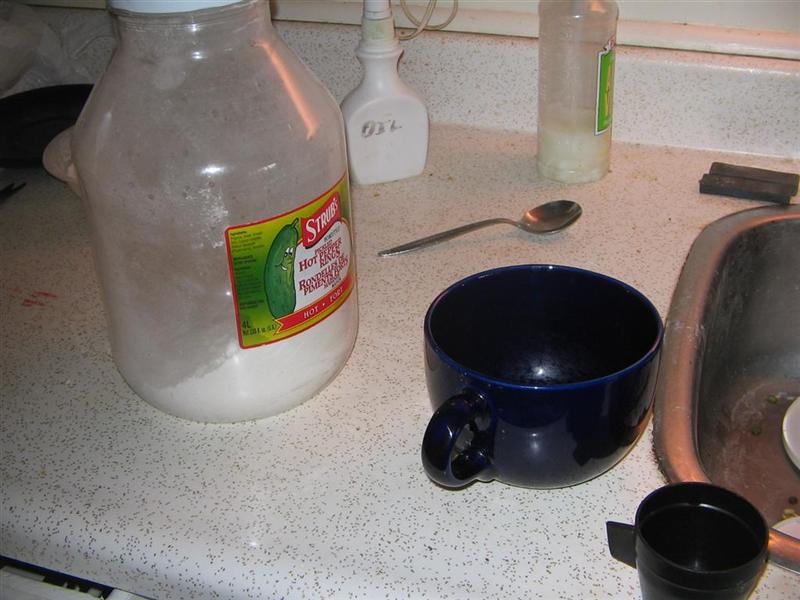
Yes; the ingredients above are mixed and stored in a large clear container I obtained from The Montreal Deli .
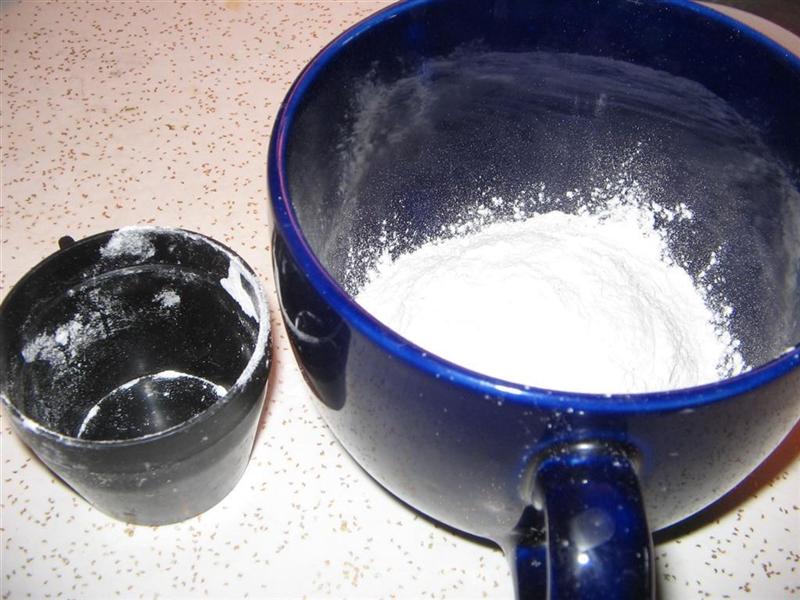
Each day around 9:00 a.m. I empty 1a ½ cup of the mixture into a bowl, add just under ½ cup warm water, and mix it until all the dry stuff has formed a dough.
My bowl is the cup of a soup-set gifted to me over ten years ago.
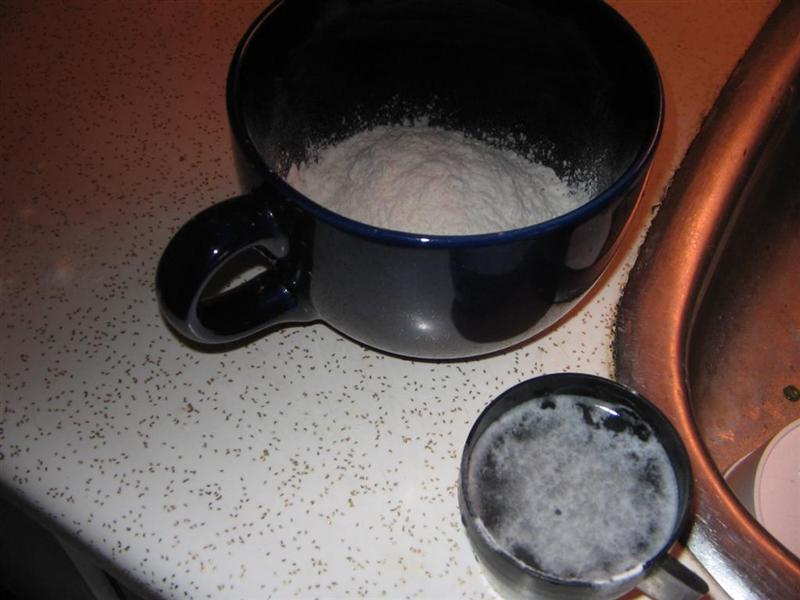
There's the almost-half-a-cup of warm water. It looks as if I’m following the traditional route of adding warm water to dry yeast in a cup, but don’t be fooled.
Remember that I used the cup to scoop out a daily serve of mixture, and the dry yeast is in my mixture.
The bubbles you see formed in the time it took me to load my camera, and they are the result of the traces of yeast around the cup.
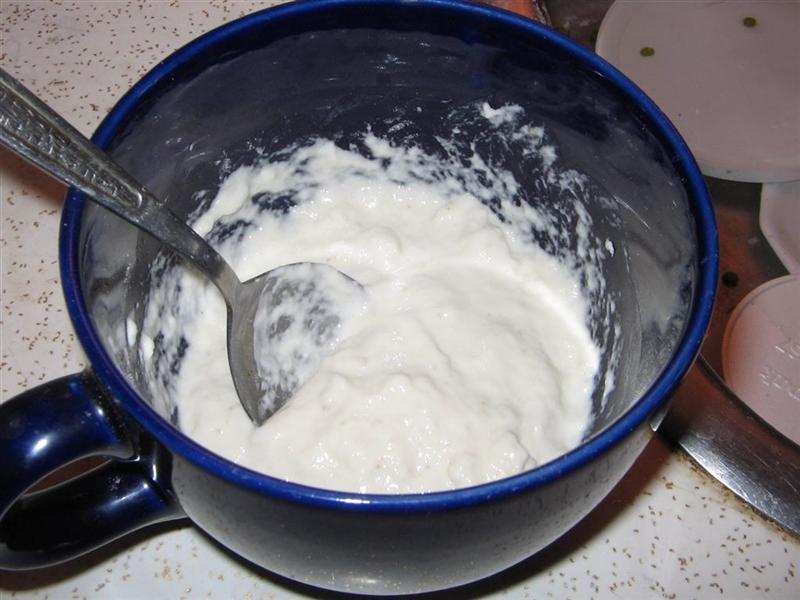
The mixture is sloppy rather than crumbly.
It reminds me very much of the consistency of PolyFilla, if you’ve ever patched small holes in a wall.
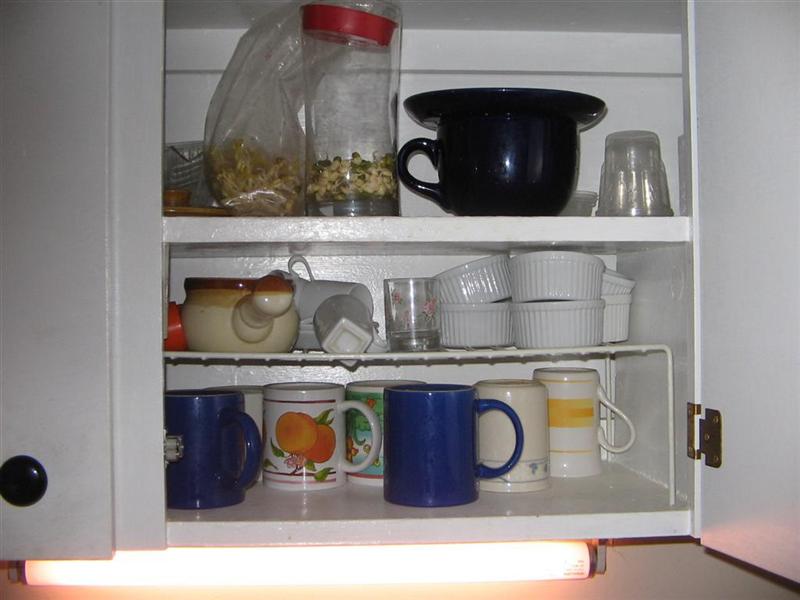
I place a plate or saucer on the bowl and leave it standing on the kitchen counter.
Or in the cupboard above the sink.
My bean sprouts love it there, because they receive a bit of warmth that seeps up from the fluorescent light under the cupboard.
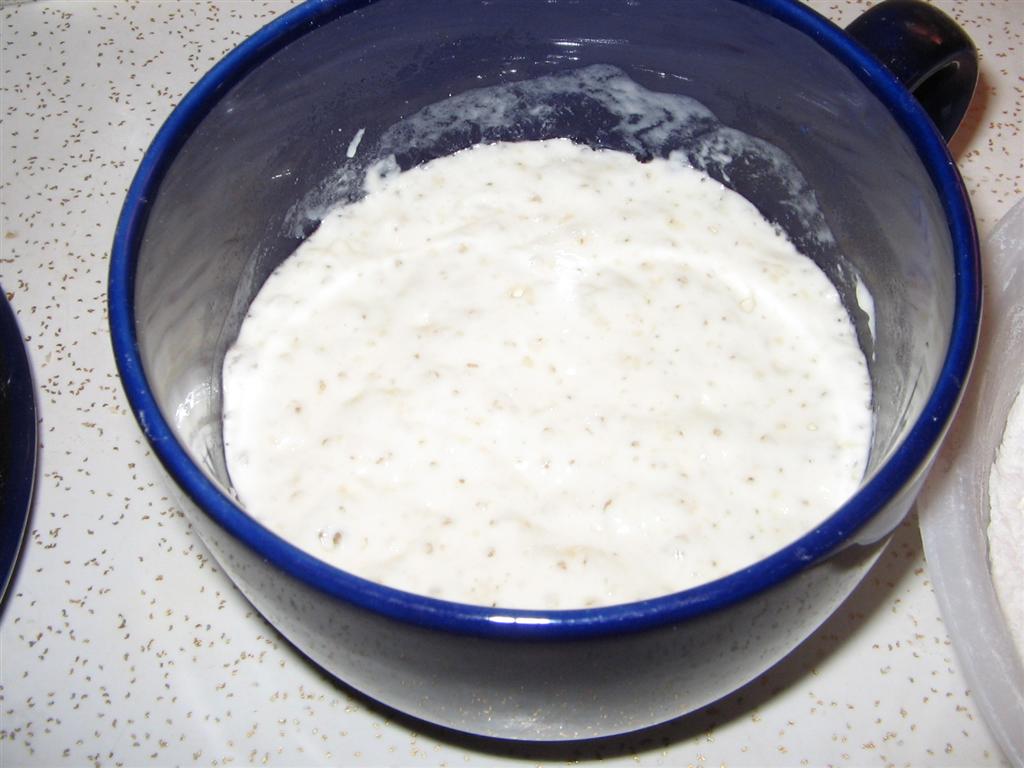
Six hours later, or more (some days I go downtown, so mix at 7:00 a.m. and return home around 6:00 p.m.)
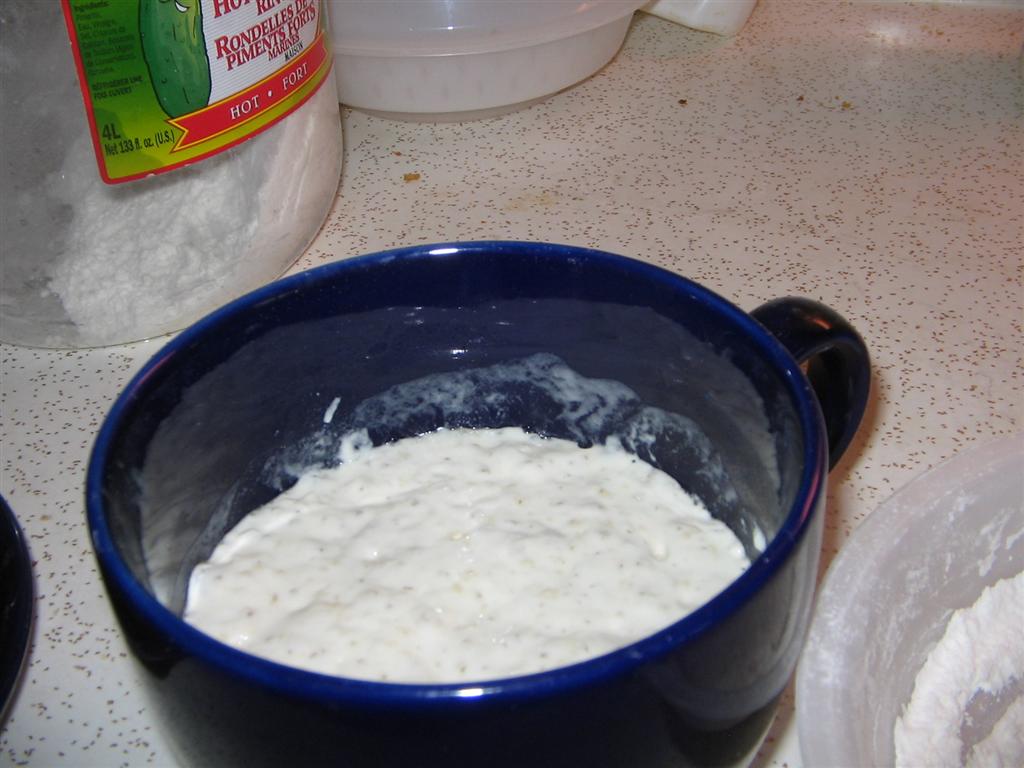
Here’s another look at the mixture just before I pour it out.
It’s alive!
Honestly!
Yeast is an animal ….
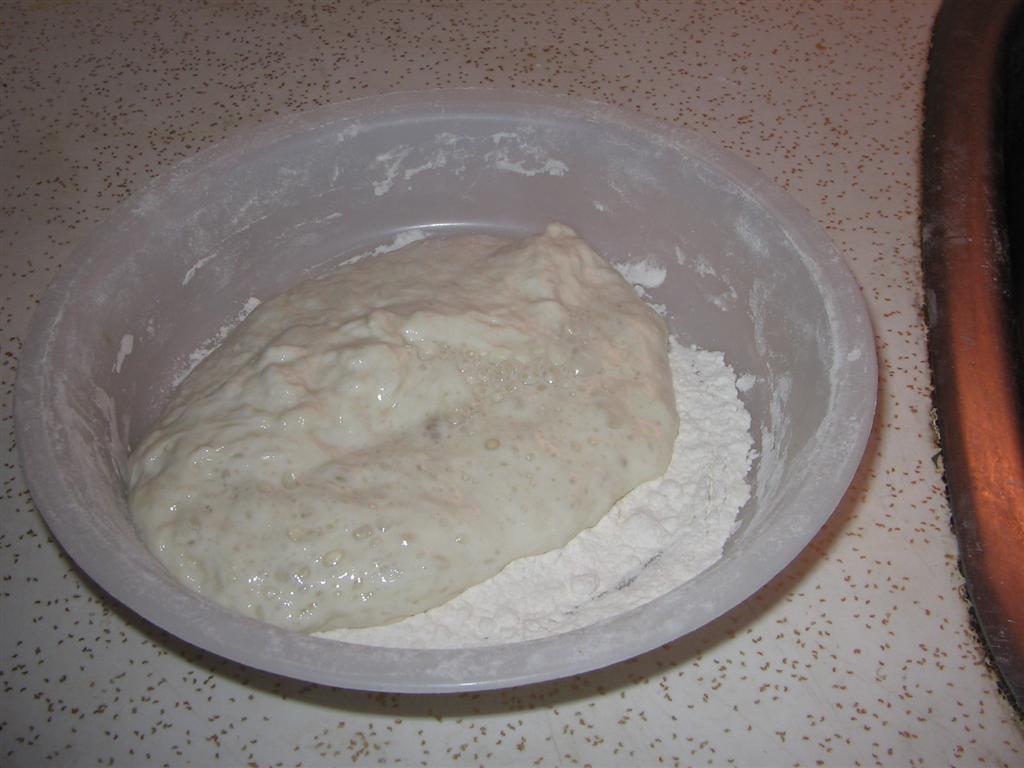
I tip/pour/slide the mixture – now all bubbly and raring-to-go – onto a plastic plate which is kept handy and loaded with flour.
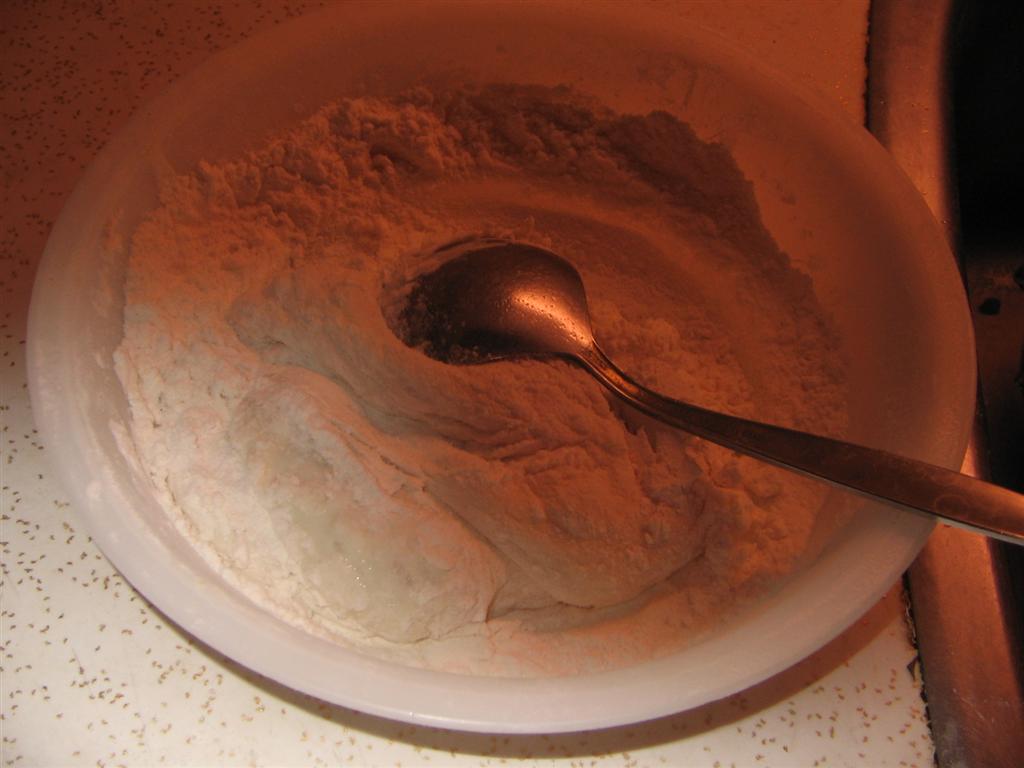
With a soup spoon I pour flour around the edges, over the top, then start rolling the ball of dough in the flour.
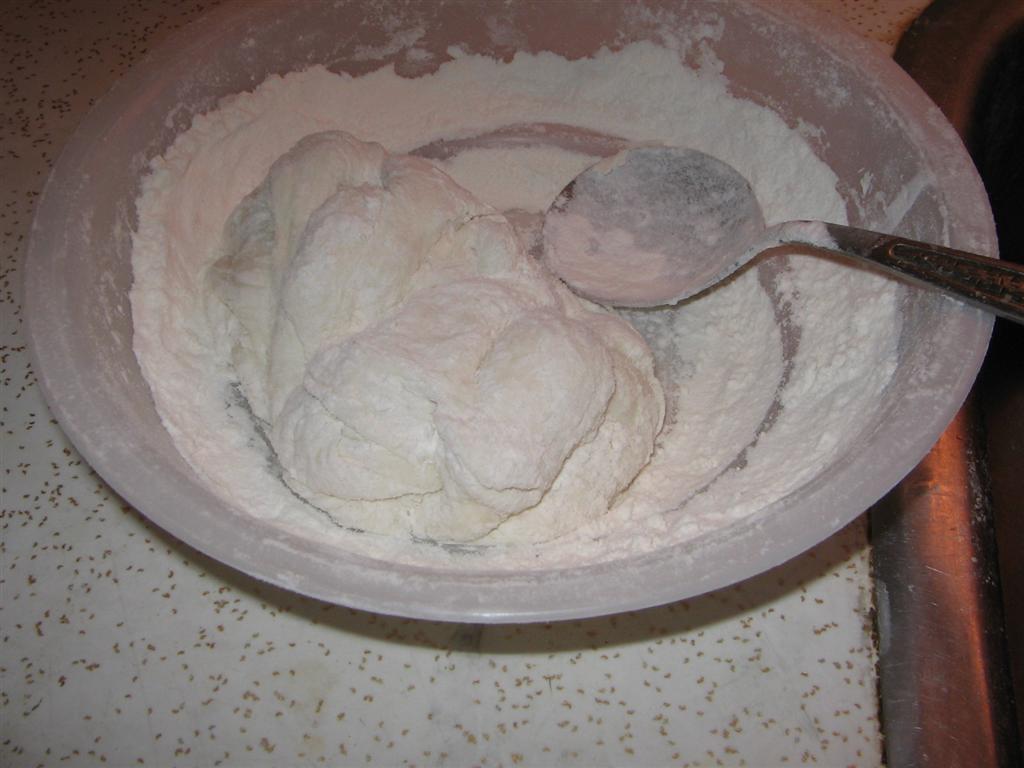
The ball is soon coated with flour and becomes easy to handle.
For about 30 seconds I fold the dough over onto/into itself. As I do that the ball picks up extra flour which both reduces the sloppiness and adds fresh food for the yeast’s second spurt.
As I do so, I can hear the squeaks as the gasses are squeezed out of the mixture.
This is as close as I get to kneading – pressing with the back of a soup-spoon for thirty seconds.
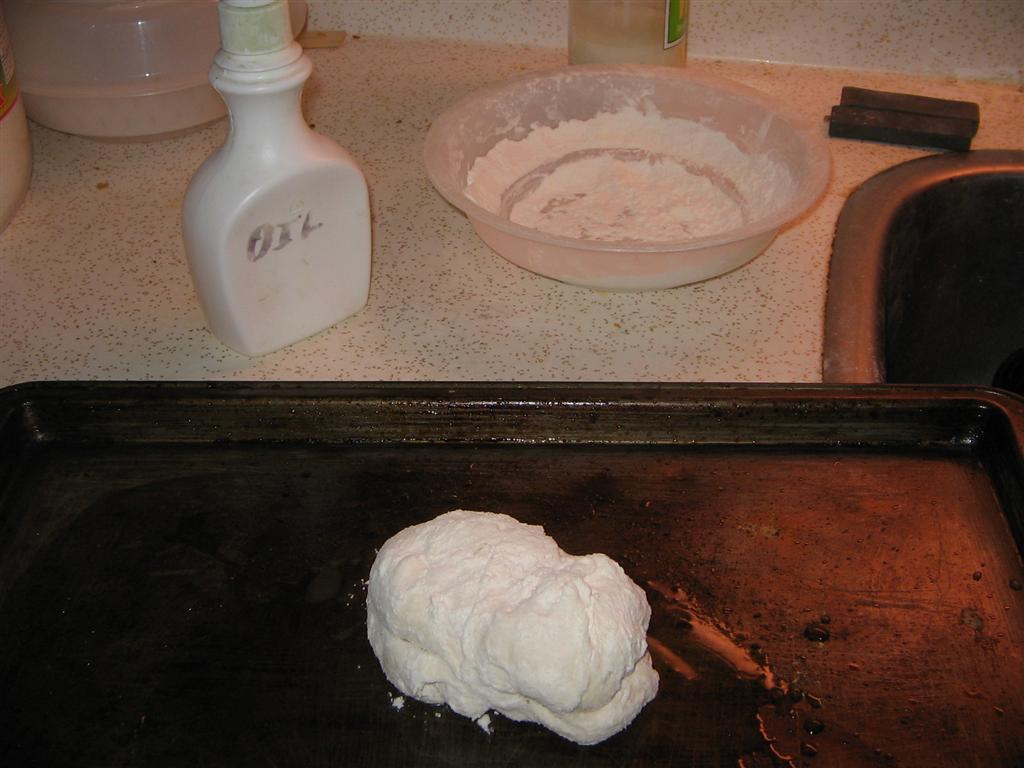
The dough is dropped onto a lightly-oiled tray and covered loosely to avoid drafts.
Yes, that’s an old salad-dressing spritzer bottle pressed into service as an oil-spray.
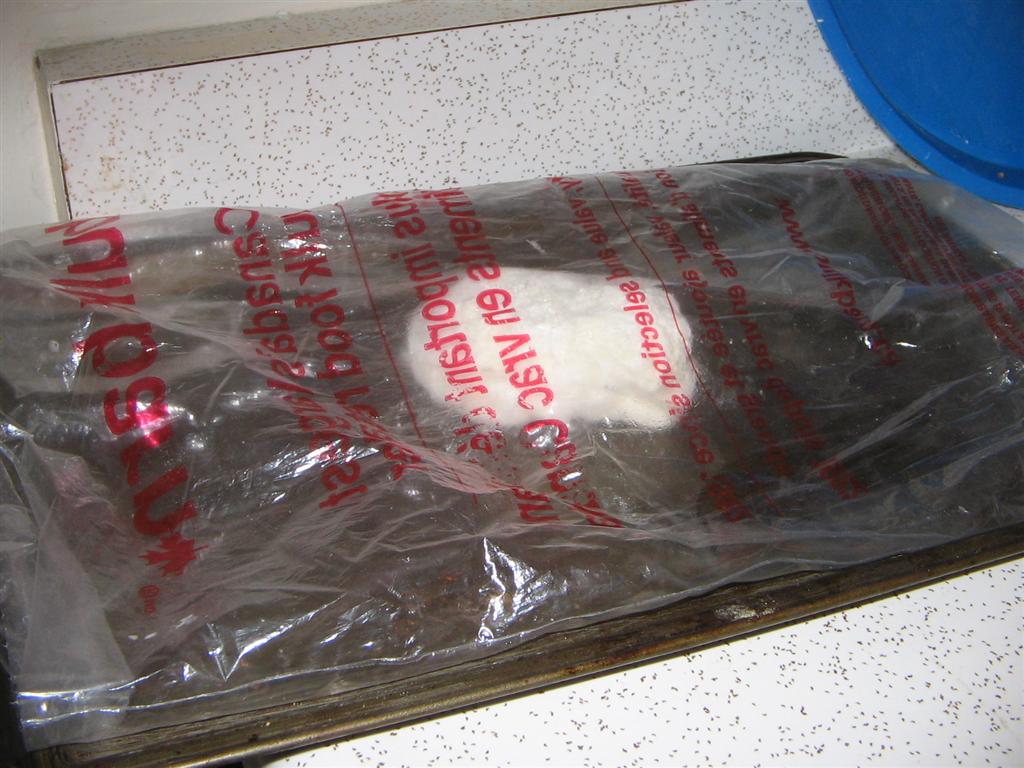
Here we are with a light plastic bag draped atop.
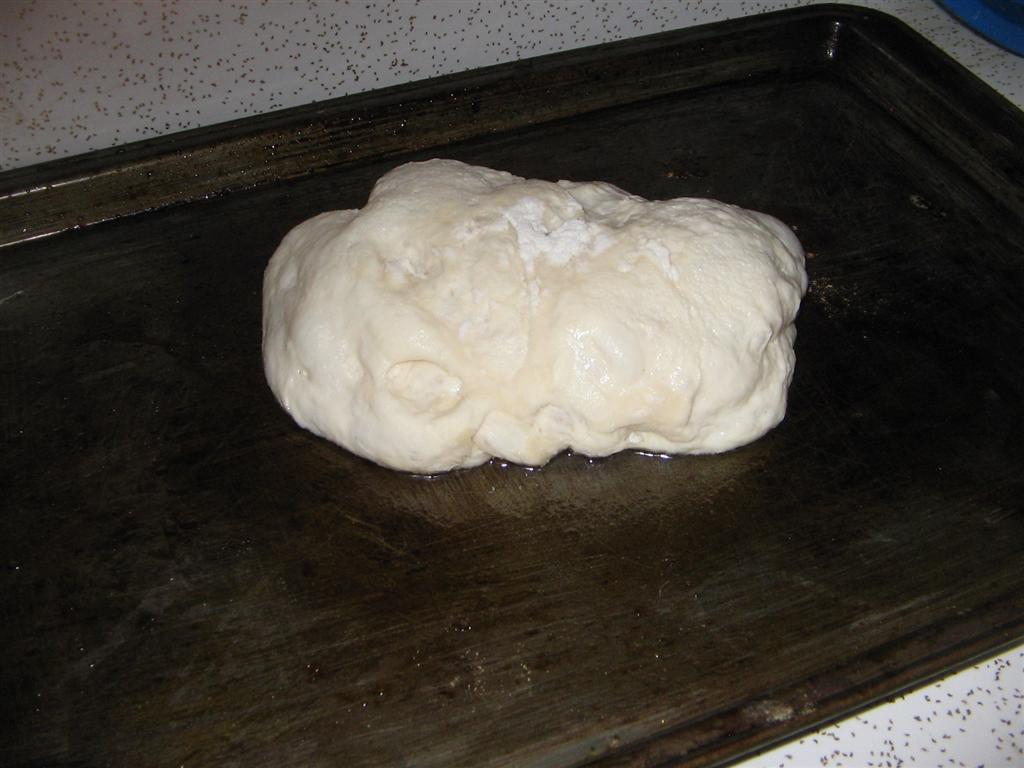
After 2 hours it has risen and is ready to bake.
Into the pre-heated 450C oven it goes.
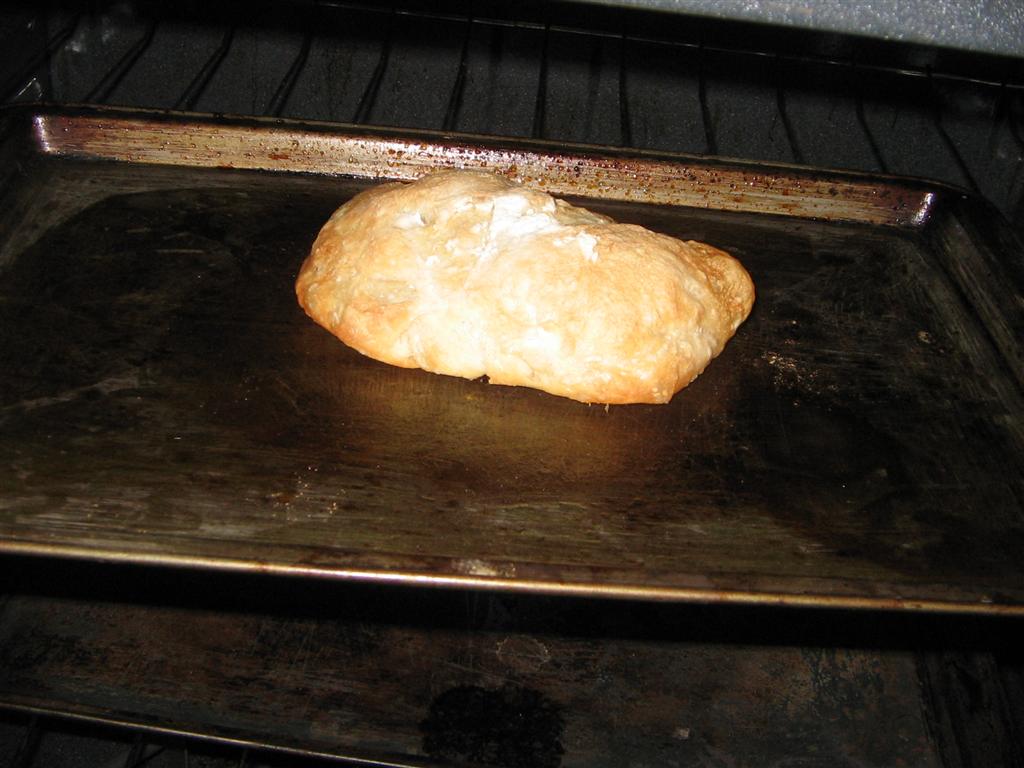
After 20 minutes I turn off the oven and leave the door ajar.
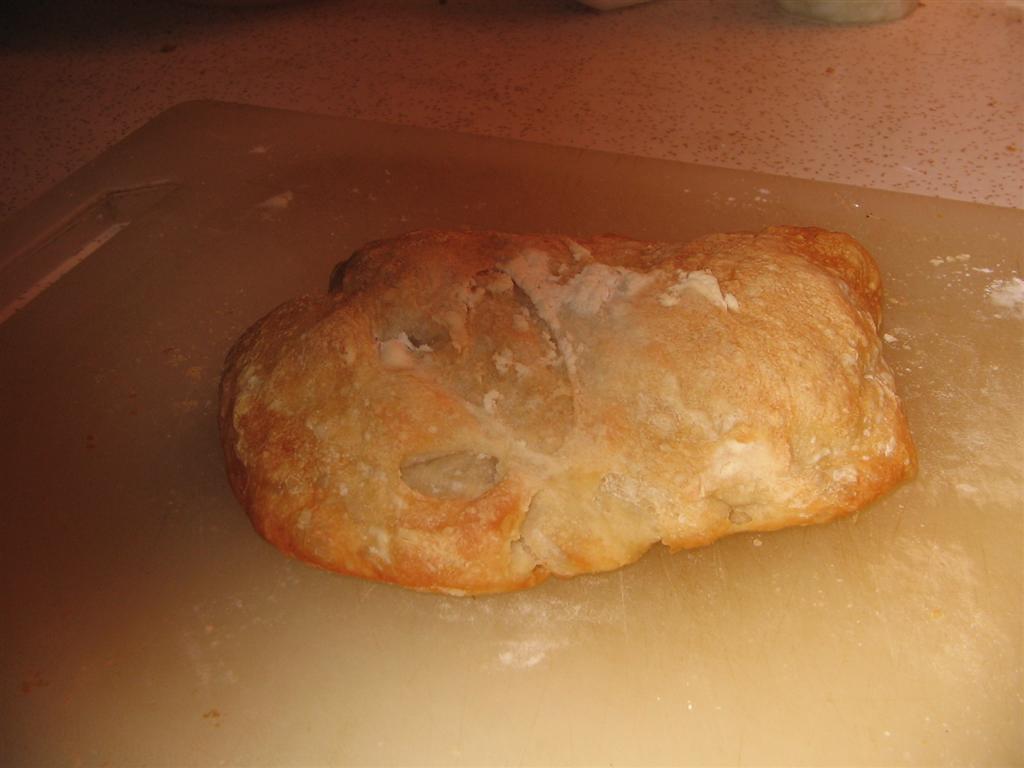
Ten minutes later the bread is ready to eat.
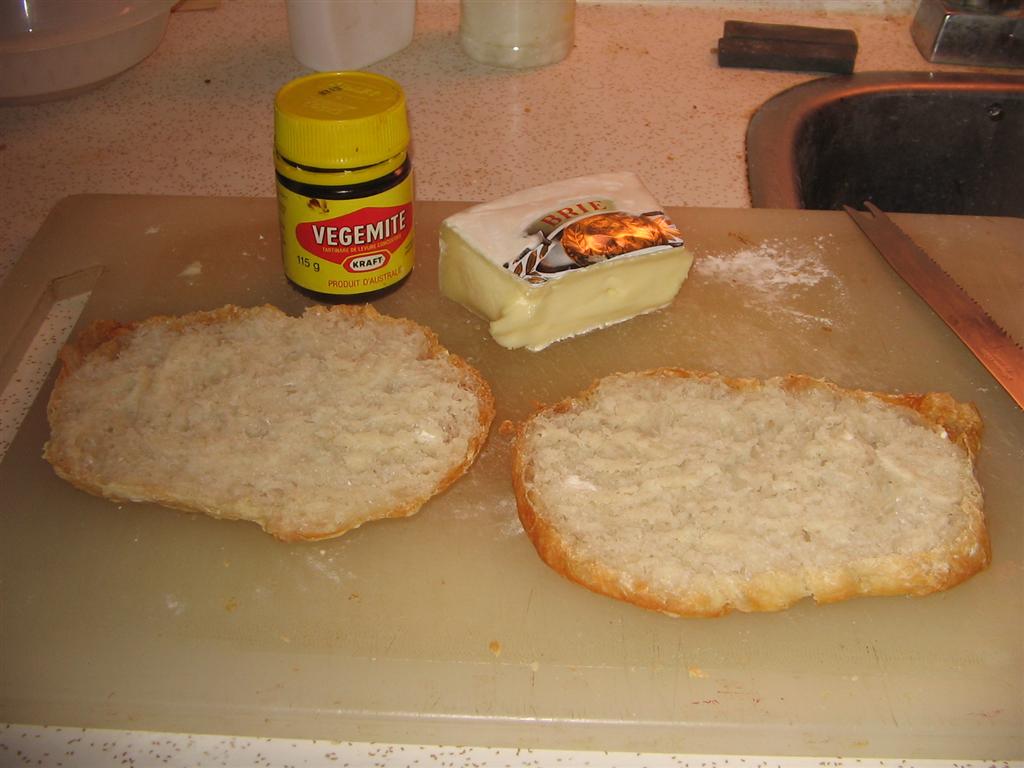
Slice it into fingers for dipping, or slice it horizontally for a sandwich.
No, that’s not real Vegemite and that’s not real Brie.
It’s just plastic imitation stuff, honest!
I wouldn’t stuff my face with Brie-covered fresh crusty bread at five in the afternoon.
Honest.
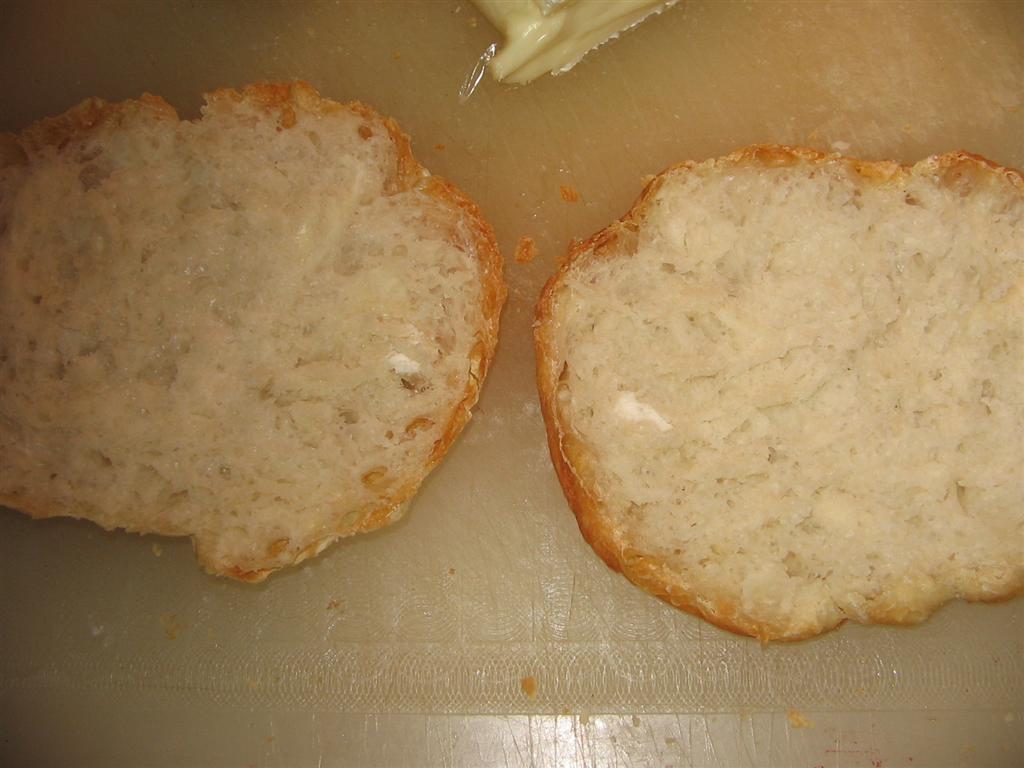
And even if I was, which I’m not, I wouldn’t take a photo of it all dripping with warm Brie.
Impress your guests!
Sunday, May 09, 2010
Is it really that fast and simple?
Yes.
I started a batch at 9:45.
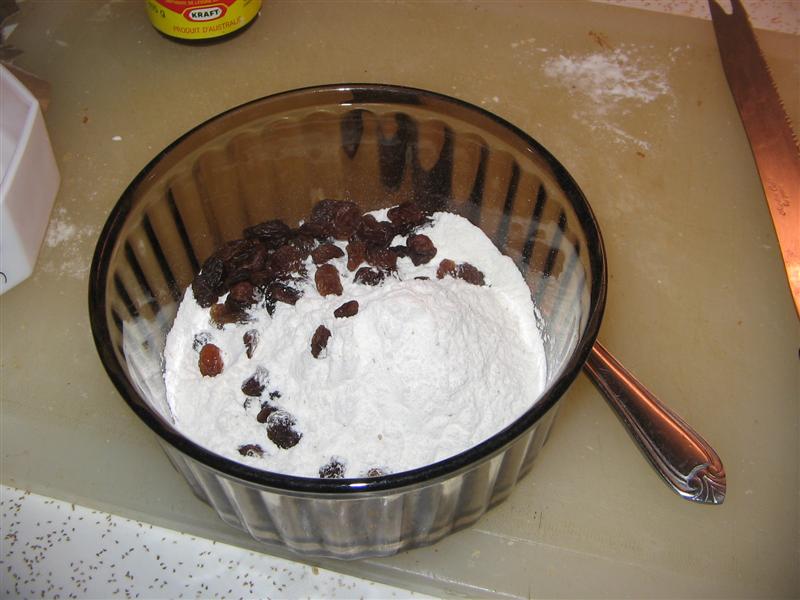
Here is the mix in the bowl.
Into the bowl goes a half-cup (75g) of dry flour-yeast-salt mixture and a small handful of raisins.
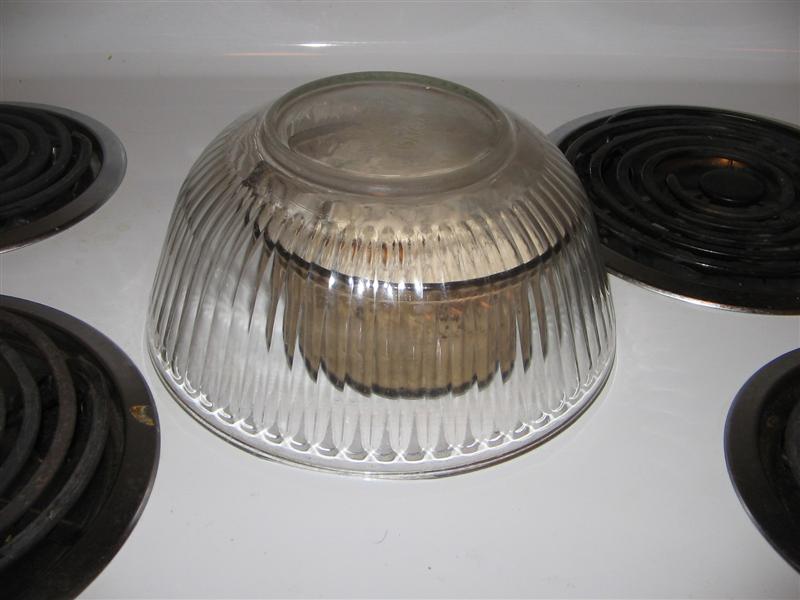
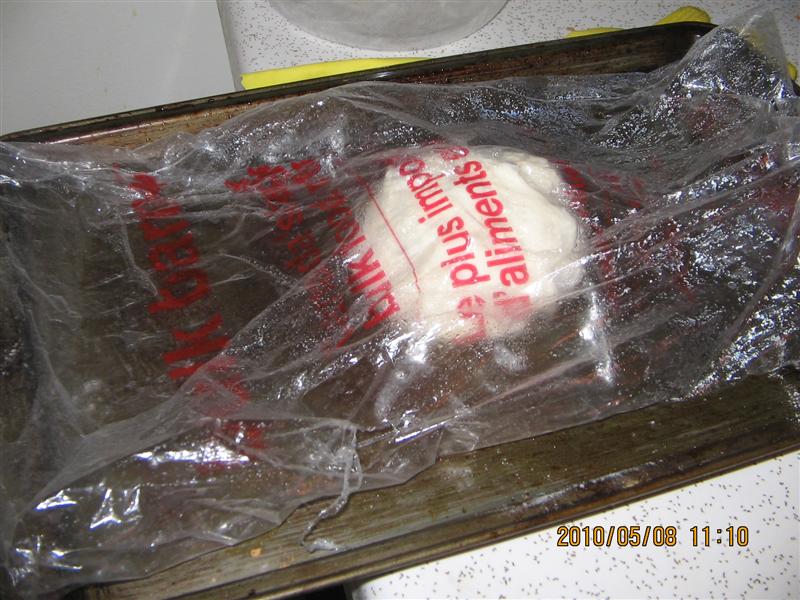
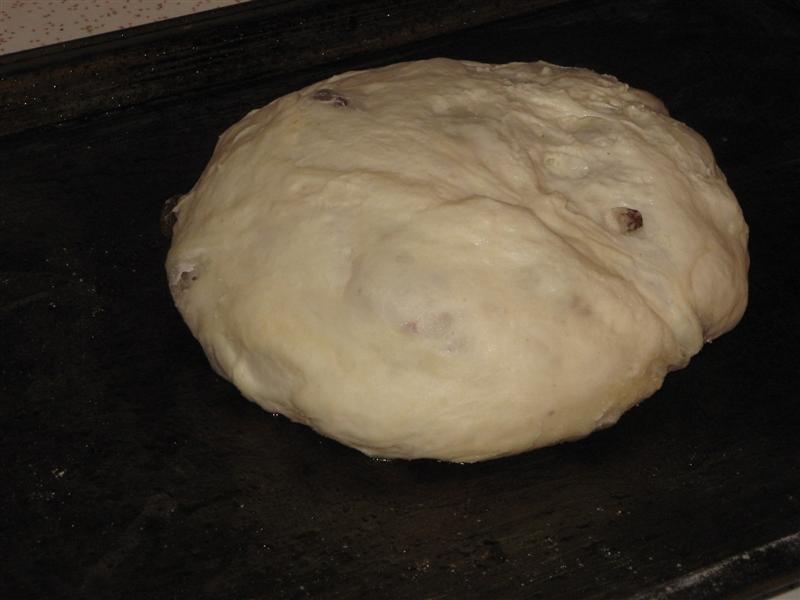
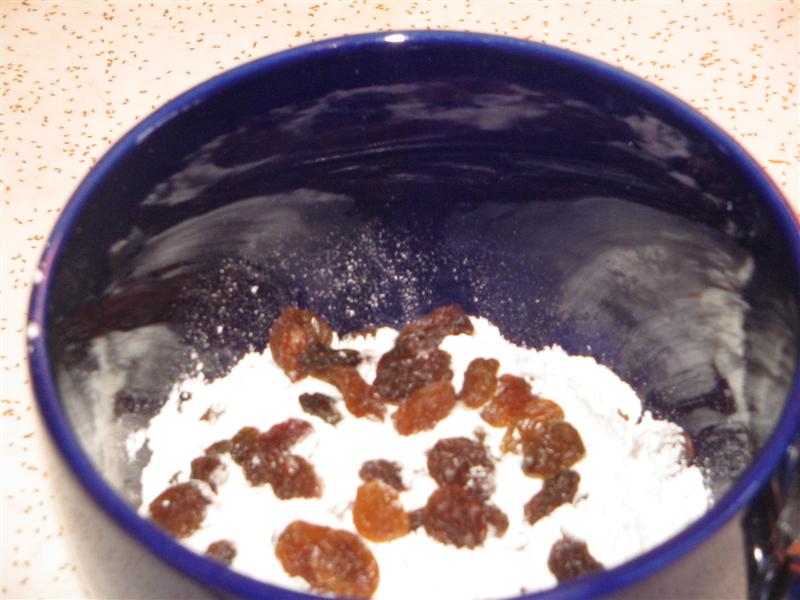

Add water. The mixture is wet, but not sloppy enough to be described as a slurry.
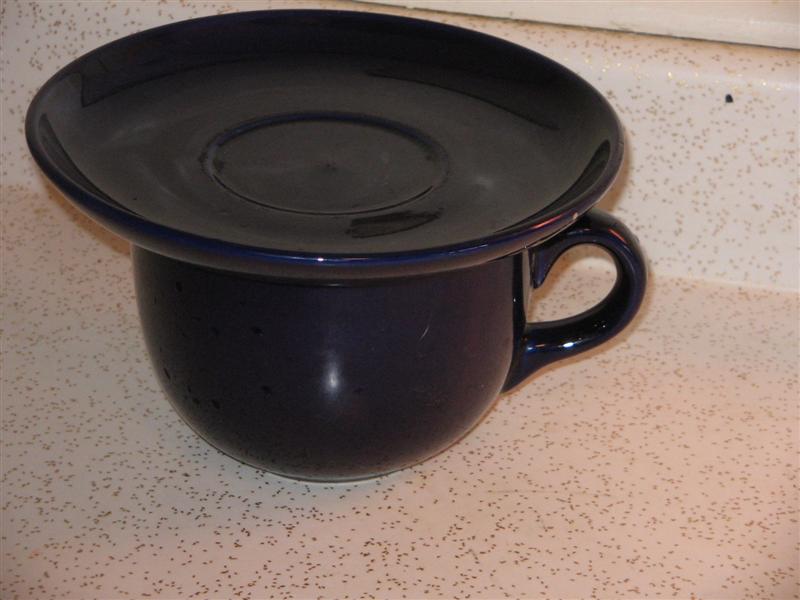
The saucer serves as a lid, and mixture is left to stand.
Time so far – about three minutes.
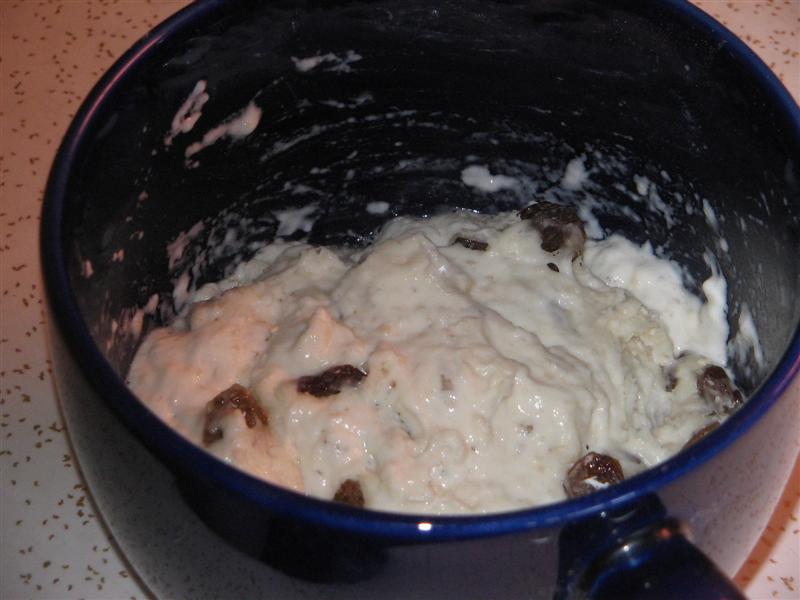
At 12:30 – just 3 ½ hours later, I drop and roll the dough into flour.
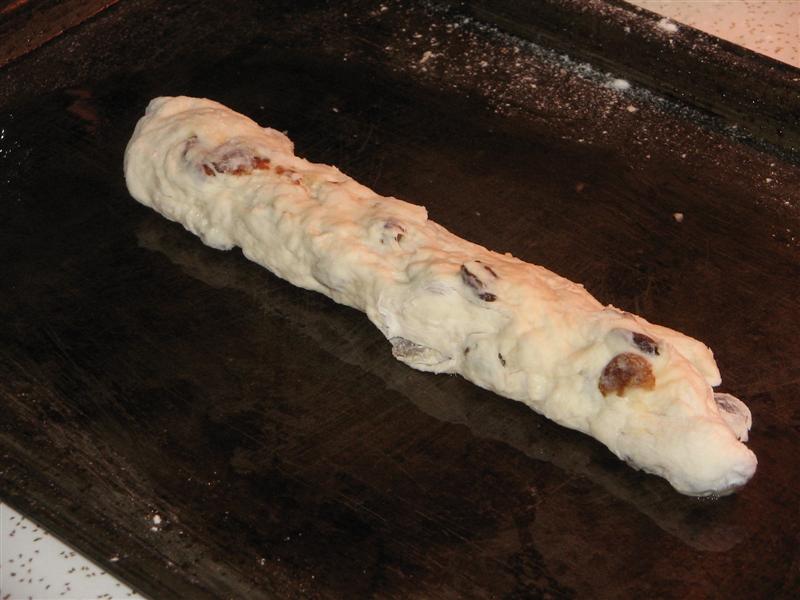
Here we are – it’s going to be a raisin-bread-stick!
Say another three minutes, tops.
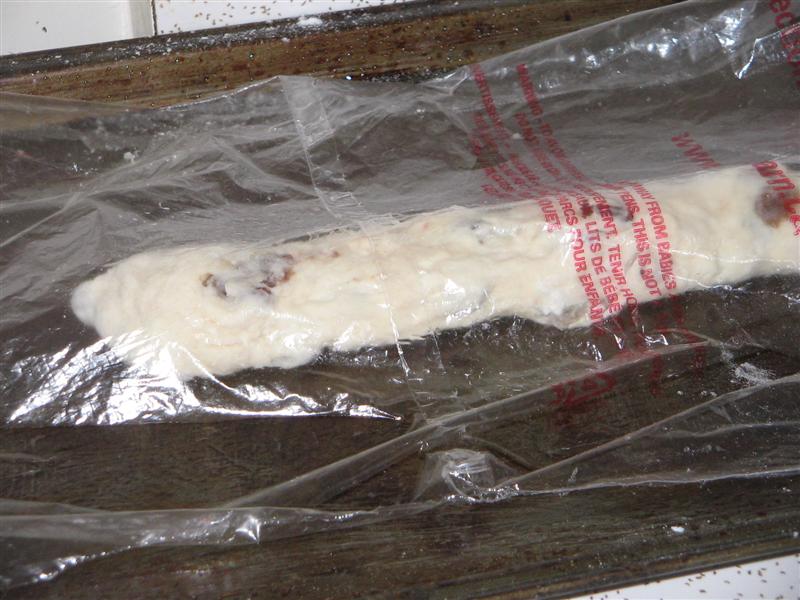
It sits under the sheet for a few hours, until I am ready to bake.
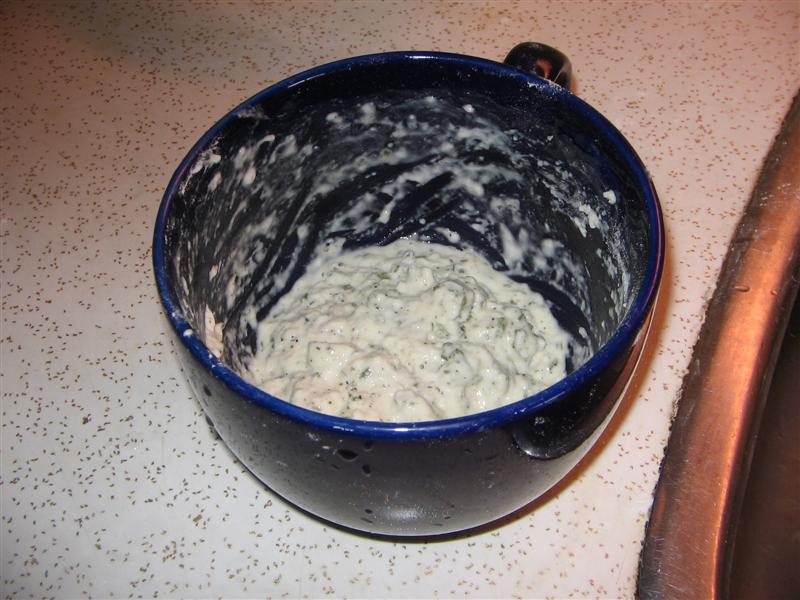
meanwhile, in the bowl I mix up another batch of dough, this time adding ½ teaspoon of ground pepper and a teaspoon of dried thyme.
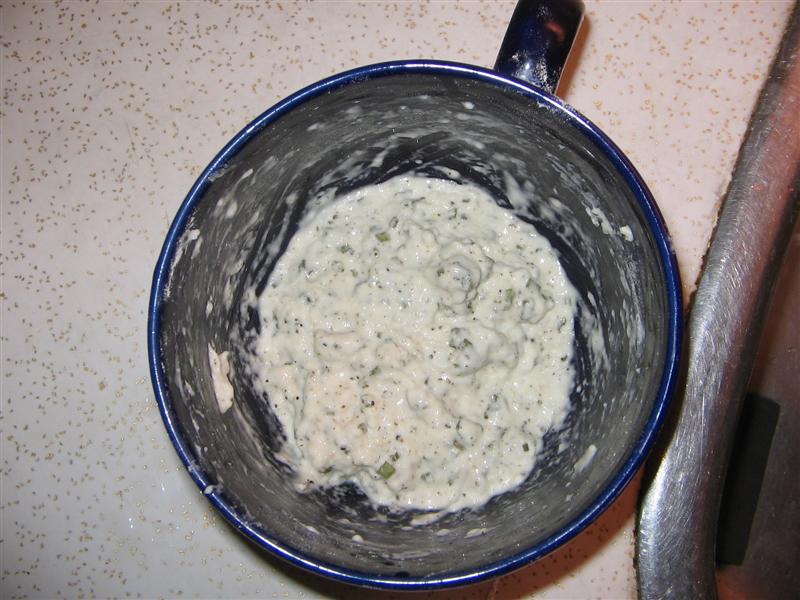
Here’s the view from above.
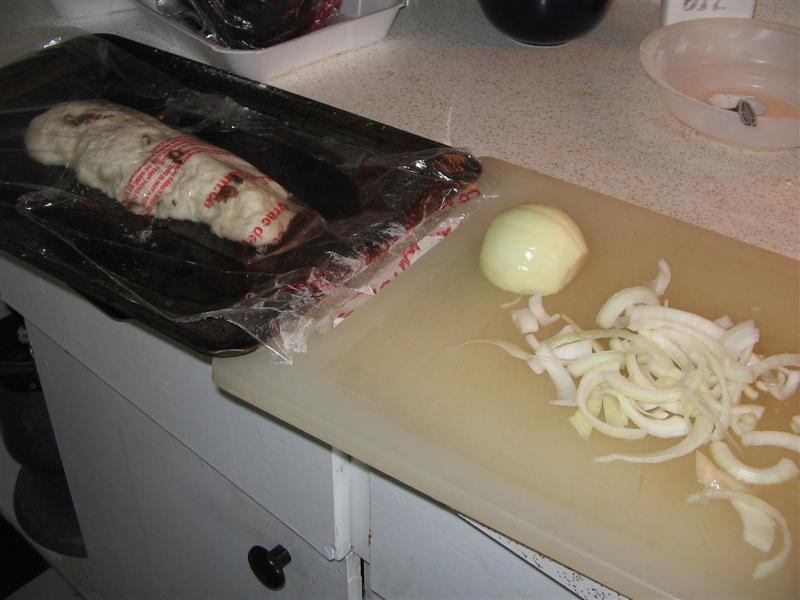
The raisin-stick is rising to the left; the ground-pepper bread is rising at the top of the photo.
I have sliced half-an-onion.
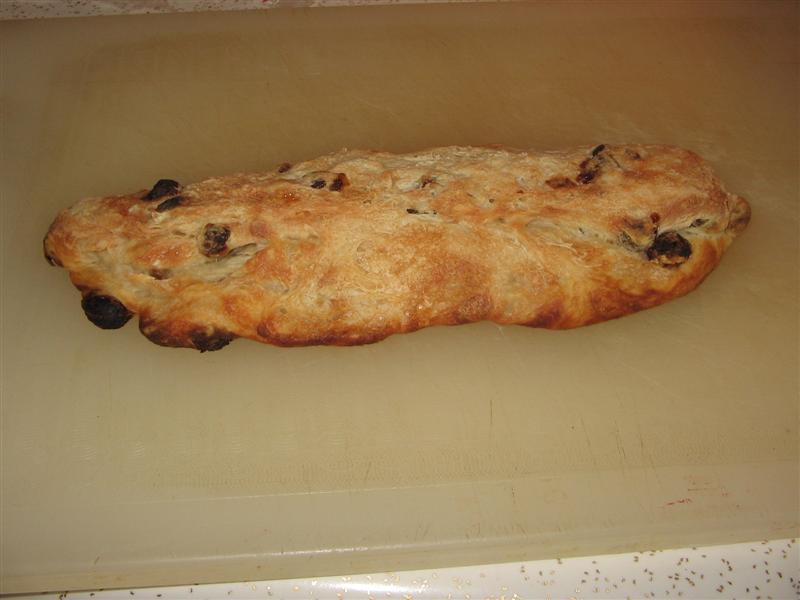
Once the raisin=bread is baked, with the oven still hot, I slide in a tray of onion-slices.

And a few minutes later they come out all crunchy-brown.
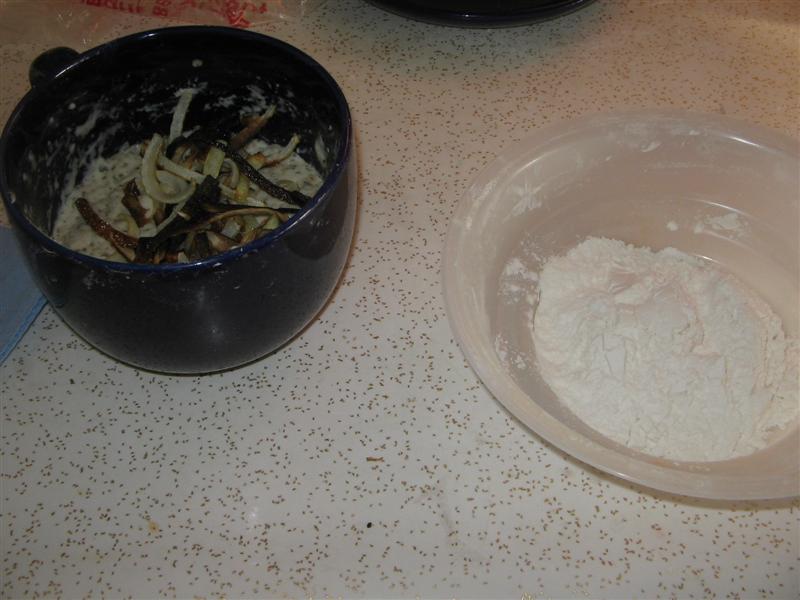
I mix the baked onion in with the pepper-thyme dough …
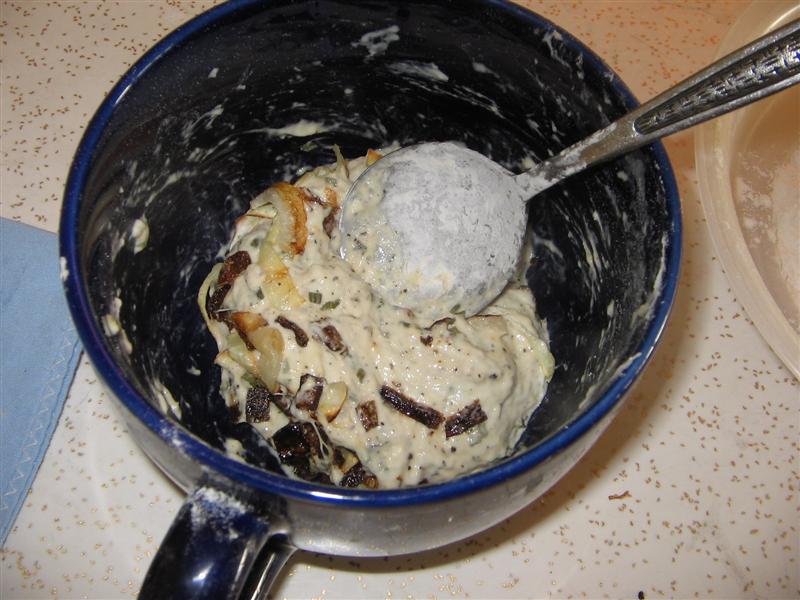
… until it is mixed in. It won’t be a uniform mix, because the damper onion threads won’t mix in.
next time I’ll bake the onion dry and crumble it. (No store-bought dried-onion flakes for me!)
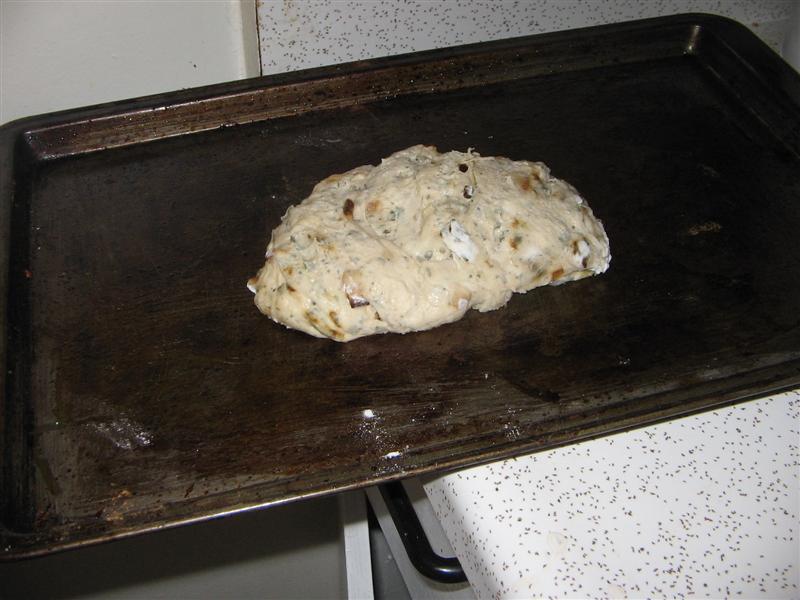
Here is my second-risen onion bun ready for baking.
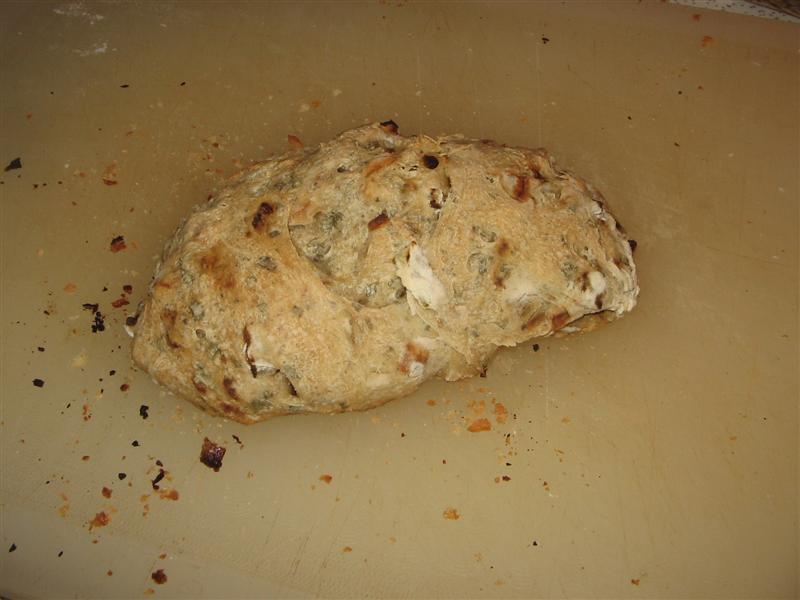
And here it is baked.
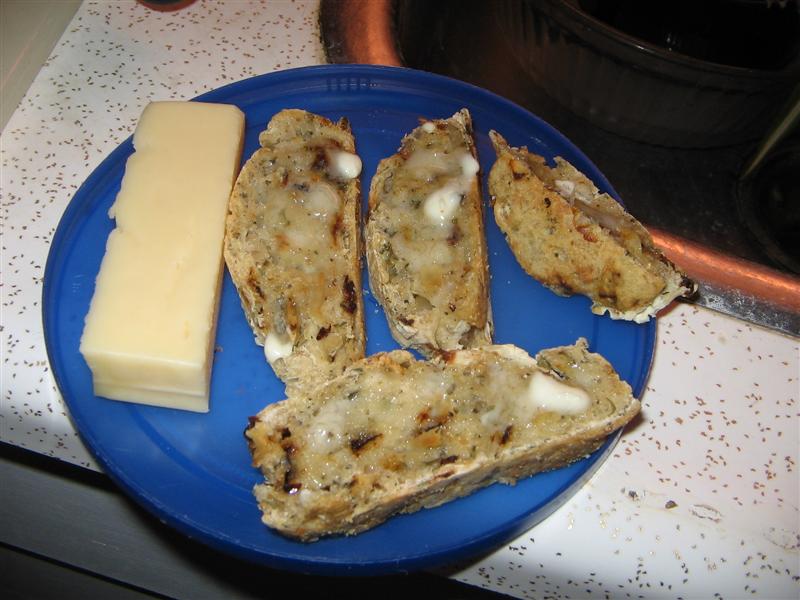
And here it is sliced into small pieces and lathered with margarine.
No, I have no idea what that slice of Gruyere is doing there.
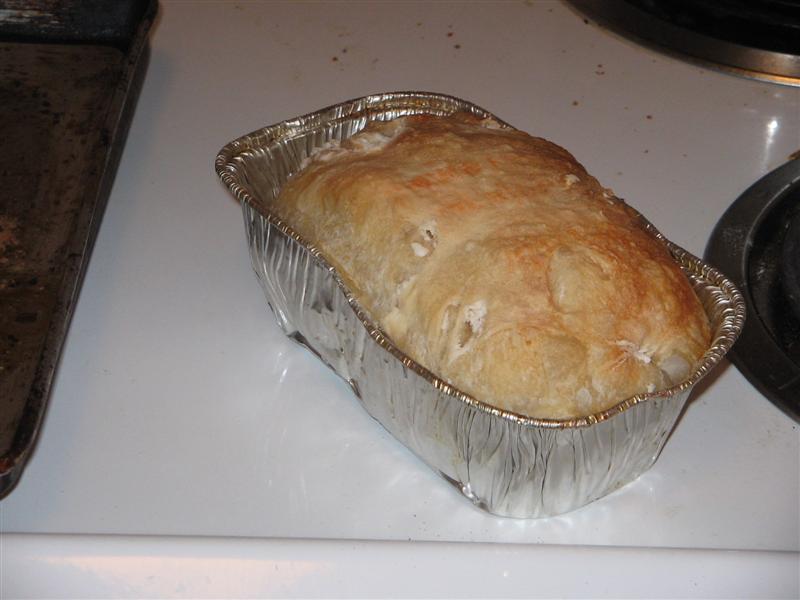
Here is a plain loaf in a small aluminium tin – usually employed for shepherd’s pie!
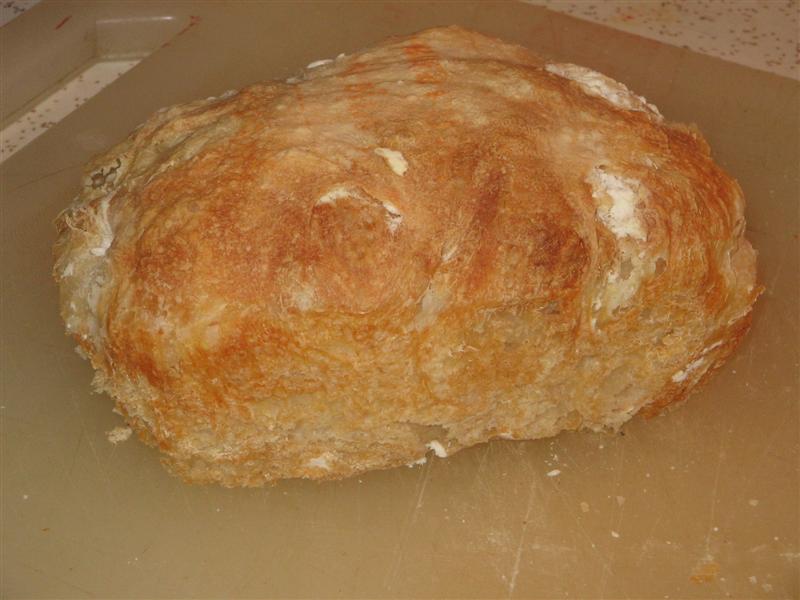
And here it is, turned out of the pan, ready for breakfast!
I sometimes add ground black pepper to the dry mix to make pepper-bread – great for lunchtime sandwiches.
The first sandwich ever that bites back when you bite it!
Friday, June 18, 2010
A mistake!
I poured flour from the wrong jar yesterday.
Instead of rolling my dough in plain flour, I rolled it in dry-mix.
The surprising result was a “puffier” bread. My guess is that adding a soupcon of extra yeast at this stage kicks off a second fermentation, which makes the bread lighter.
Who knew?
709-218-7927 CPRGreaves@gmail.com Bonavista, Friday, November 26, 2021 5:58 PM Copyright © 1990-2021 Chris Greaves. All Rights Reserved. |
|---|